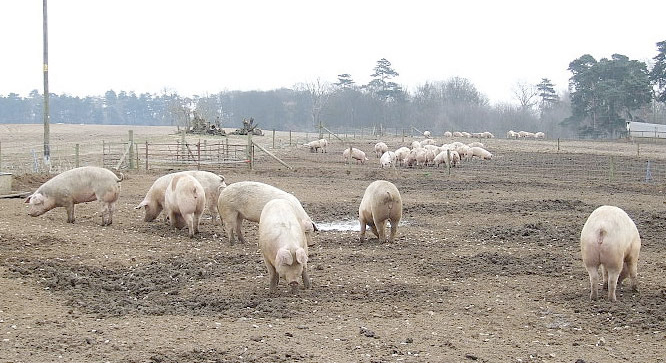
Pig producers across Europe are struggling to maintain margins, with a range of global factors affecting returns, according to Stuart Ashworth, Head of Economics Services with Quality Meat Scotland (QMS).
“The fallout from Russian restrictions on trade and the effects of African Swine Fever in Eastern Europe continue to weigh heavy on the market,” said Mr Ashworth.
European producer prices collapsed in late September last year and continued to slide until mid-January this year. Since then there has been some modest recovery, aided by the availability of European Commision Private Storage Aid from March to mid-May and finding alternative non-EU markets for pig meat.
“However, despite losing access to Russia and a decline in exports to Hong Kong of 40%, the European Union has found other markets and increased exports of pigmeat to markets outside the EU by 3.6% in the first six months of 2015. Growth has been achieved in trade with China, South Korea, Australia and the Ivory Coast. However, competition from Brazil and a resurgent USA means that this trade is price sensitive” said Mr Ashworth.
Despite finding these alternative markets, a growth in EU pigmeat production of just over two percent in the first half of the year has left Europe well supplied with pigmeat.
“Consequently, the growth in exports outside the EU did little to increase producer prices and currently the average producer price across Europe is around 10% lower than last year,” he stated.
According to the EC, the UK has fared slightly better than the average European producer, said Mr Ashworth, with a price fall of 6-7% in euro terms.
“In reality, though, Scottish producers are being squeezed harder than their European colleagues because in Sterling terms Scottish and UK producers are seeing prices around 15% lower than last year. With animal feed prices having fallen more slowly, profit margins in the sector have clearly come under pressure both in Scotland and across Europe.”
EC forecasts regarding short term future production across Europe suggest little respite for producers, production in the second half of 2015 is expected to be 1.5 to two percent higher than last year.
“Margin pressure will have contributed to a decline of six percent in the German and Polish sow herds recorded in June although other counties, particularly Spain, have seen some growth in sow numbers,” said Mr Ashworth.
Provisional June census figures from England show the breeding sow herd broadly unchanged on the year but indicate a decline in fattening pigs.
“Meanwhile, and in contrast to the number of fattening pigs reported in the census, UK slaughter data shows an increase of almost five per cent in UK prime pig slaughterings over the past three months compared to last year. This has contributed to a slow slide in UK prices which have slipped around 1% since the start of August,” he observed.
The continued low producer prices across Europe have led the European Commission to consider, once again, opening private storage aid for pigmeat products where processors are paid a contribution to storage costs for product they take off the market for a period of time.
In contrast to the scheme operating earlier this year, said Mr Ashworth, consideration is been given to storage aid being offered for some low value products, such as lard, for which the Russian market was particularly important. By encouraging processors to store product, the hope is that producer prices will recover some lost ground.
